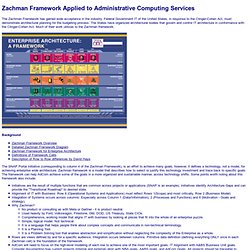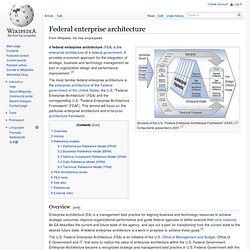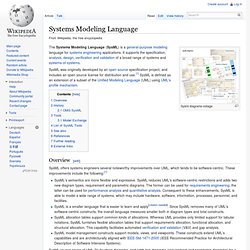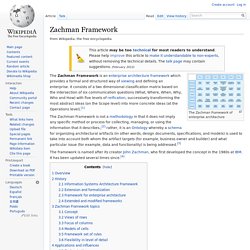

Zachman Framework. The Zachman Framework has gained wide acceptance in the industry.

Federal Government IT of the United States, in response to the Clinger-Cohen Act, must demonstrate architectural planning for the budgeting process. The States have organized architectural bodies that govern and control IT architecture in conformance with the Clinger-Cohen Act. Much of their work utilizes to the Zachman framework. Background The SNAP Portal initiative (corresponding to column 4 of the Zachman Framework), is an effort to achieve many goals, however, it defines a technology, not a model, for achieving enterprise wide architecture. Initiatives are the result of multiple functions that are common across projects or applications (SNAP is an example). CriKit – Private Cloud for the Rest of Us. Control your entire IT environment from a single dashboard.
DOGMA. DOGMA, short for Developing Ontology-Grounded Methods and Applications, is the name of research project in progress at Vrije Universiteit Brussel's STARLab, Semantics Technology and Applications Research Laboratory.

It is an internally funded project, concerned with the more general aspects of extracting, storing, representing and browsing information.[1] Technical introduction[edit] taxonomical relationship (genus): e.g., < G, manager, is a, subsumes, person >;non-taxonomical relationship (differentia): e.g.', < G, manager, directs, directed by, company >. Lexons could be approximately considered as a combination of an RDF/OWL triple and its inverse, or as a conceptual graph style relation (Sowa, 1984). Language versus conceptual level[edit] Another distinguishing characteristic of DOGMA is the explicit duality (orthogonal to double articulation) in interpretation between the language level and conceptual level. For example, consider a term “capital”. Ontology evolution[edit] Jazz Community Site. SysML.org - Open Source Specification Project. Federal Enterprise Architecture.
Structure of the U.S.

"Federal Enterprise Architecture Framework" (FEAF) Components, presented in 2001.[1] A federal enterprise architecture (FEA) is the enterprise architecture of a federal government. It provides a common approach for the integration of strategic, business and technology management as part of organization design and performance improvement. [2] The most familiar federal enterprise architecture is the enterprise architecture of the Federal government of the United States, the U.S. "Federal Enterprise Architecture" (FEA) and the corresponding U.S.
Overview[edit] Enterprise architecture (EA) is a management best practice for aligning business and technology resources to achieve strategic outcomes, improve organizational performance and guide federal agencies to better execute their core missions. The U.S. There are numerous benefits that accrue from implementing and using an enterprise architecture within the U.S. History[edit] Suplementairy OMB circulars have been:
Systems Modeling Language. Sysml diagrams collage The Systems Modeling Language (SysML) is a general-purpose modeling language for systems engineering applications.

It supports the specification, analysis, design, verification and validation of a broad range of systems and systems-of-systems. Overview[edit] SysML offers systems engineers several noteworthy improvements over UML, which tends to be software-centric. These improvements include the following:[1] SysML reuses seven of UML 2's fourteen diagrams, and adds two diagrams (requirement and parametric diagrams) for a total of nine diagram types. The advantages of SysML over UML for systems engineering become obvious if you consider a concrete example, like modeling an automotive system.
Concerning the rest of the automotive system, enhanced activity diagrams and state machine diagrams can be used to specify the embedded software control logic and information flows for the on-board automotive computers. Department of Defense Architecture Framework. DoD Architecture Framework v1.5.[1] DoDAF Architecture Framework Version 2.0[2] This Architecture Framework is especially suited to large systems with complex integration and interoperability challenges, and it is apparently unique in its employment of "operational views".

These views offer overview and details aimed to specific stakeholders within their domain and in interaction with other domains in which the system will operate.[3] Overview[edit] The DoDAF provides a foundational framework for developing and representing architecture descriptions that ensure a common denominator for understanding, comparing, and integrating architectures across organizational, joint, and multinational boundaries. All major U.S. Zachman Framework.
The Zachman Framework of enterprise architecture The Zachman Framework is not a methodology in that it does not imply any specific method or process for collecting, managing, or using the information that it describes.;[2] rather, it is an Ontology whereby a schema for organizing architectural artifacts (in other words, design documents, specifications, and models) is used to take into account both whom the artifact targets (for example, business owner and builder) and what particular issue (for example, data and functionality) is being addressed.[3] The framework is named after its creator John Zachman, who first developed the concept in the 1980s at IBM.

It has been updated several times since.[4] Overview[edit] The term "Zachman Framework" has multiple meanings. Collage of Zachman Frameworks as presented in several books on Enterprise Architecture from 1997 to 2005.